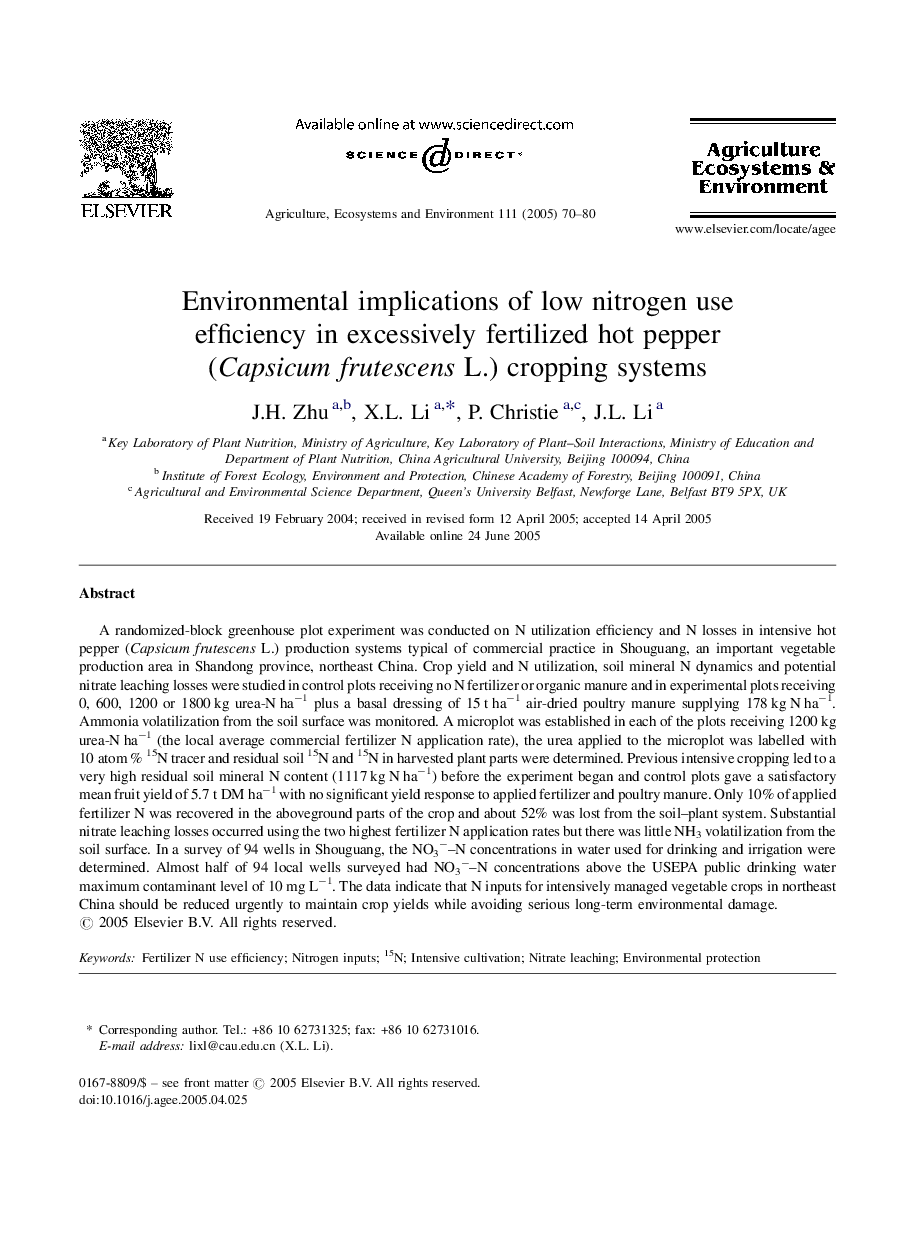| Article ID | Journal | Published Year | Pages | File Type |
|---|---|---|---|---|
| 8970720 | Agriculture, Ecosystems & Environment | 2005 | 11 Pages |
Abstract
A randomized-block greenhouse plot experiment was conducted on N utilization efficiency and N losses in intensive hot pepper (Capsicum frutescens L.) production systems typical of commercial practice in Shouguang, an important vegetable production area in Shandong province, northeast China. Crop yield and N utilization, soil mineral N dynamics and potential nitrate leaching losses were studied in control plots receiving no N fertilizer or organic manure and in experimental plots receiving 0, 600, 1200 or 1800 kg urea-N haâ1 plus a basal dressing of 15 t haâ1 air-dried poultry manure supplying 178 kg N haâ1. Ammonia volatilization from the soil surface was monitored. A microplot was established in each of the plots receiving 1200 kg urea-N haâ1 (the local average commercial fertilizer N application rate), the urea applied to the microplot was labelled with 10 atom % 15N tracer and residual soil 15N and 15N in harvested plant parts were determined. Previous intensive cropping led to a very high residual soil mineral N content (1117 kg N haâ1) before the experiment began and control plots gave a satisfactory mean fruit yield of 5.7 t DM haâ1 with no significant yield response to applied fertilizer and poultry manure. Only 10% of applied fertilizer N was recovered in the aboveground parts of the crop and about 52% was lost from the soil-plant system. Substantial nitrate leaching losses occurred using the two highest fertilizer N application rates but there was little NH3 volatilization from the soil surface. In a survey of 94 wells in Shouguang, the NO3â-N concentrations in water used for drinking and irrigation were determined. Almost half of 94 local wells surveyed had NO3â-N concentrations above the USEPA public drinking water maximum contaminant level of 10 mg Lâ1. The data indicate that N inputs for intensively managed vegetable crops in northeast China should be reduced urgently to maintain crop yields while avoiding serious long-term environmental damage.
Related Topics
Life Sciences
Agricultural and Biological Sciences
Agronomy and Crop Science
Authors
J.H. Zhu, X.L. Li, P. Christie, J.L. Li,
